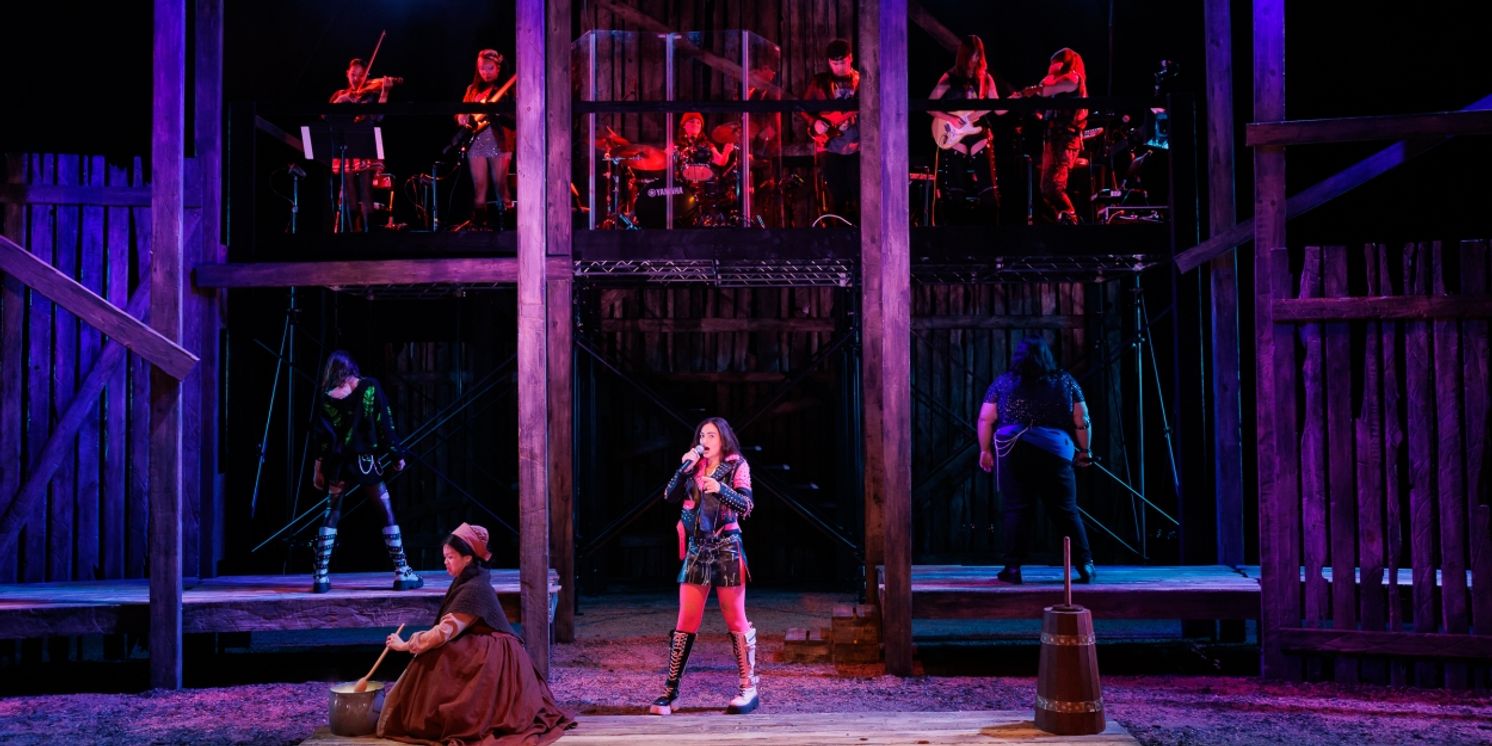Student Blog: Opinion: Politics and Art are Inseparable
Musings on Critique, Creativity, and Vinegar Tom

One of the worst bad-faith criticisms you can find of anything is the idea that something was “too political” or “had an agenda” and is therefore not something you should engage with. It infuriates me to no end. In addition to being a dog whistle that feels more like a foghorn, it is contradictory to what makes art art.
All art is irretrievably political the same way that all shadows are cast from light. Film, theater, and music are fundamentally constructed through the lens of an artist who views the world in one way or another. That view has been informed by each new moment of shock or awe that befell them at any particular moment of their life, and forced them to explain it in the only way they know how.
I recently saw the film Conclave and was surprised at how on-the-nose some of its allegory was. One candidate for the papacy ran a campaign of nothing but hatred, making conscious choices to use his platform to turn people against each other, and promising to throw out decades of progress in favor of a romanticized memory of how the world used to be. He spoke wickedly about his traditions being poisoned by people who didn’t look or think like him and for huge stretches of the runtime, he seems to be the inevitable victor. Meanwhile, the progressives struggled to find a palatable candidate that cast a wide enough umbrella to appeal to enough cardinals and prevent him from winning at any cost. Sound familiar?
On a more local scale to me, looking at UCSD’s two productions for this quarter are enormously telling of the world we currently set out to create art in. There’s the punk-rock quasimusical Vinegar Tom, and the emblematic Hedda Gabler, two plays about the ways that our society is built to chain down and silence women. UCSD curated this season as a way of juxtaposing the fear imposed on women by the current political climate, and after how the election went, it ended up being a foreboding reminder of the draconian people who won power by promising to do draconian things.
Lisa Portes’s razor-sharp direction for Gabler began with the idea that the play takes place on a square platform with white perimeter lighting that was reminiscent of the suggestion of restriction from how Michael Arden staged Leo Frank’s prison cell in Parade. Hedda is the only character who never could step foot outside that perimeter. Every other character is allowed to rest or to exit, but it is Hedda’s duty to constantly perform the roles of wife, homemaker, and woman.
What it means to be a part of the UCSD production of Vinegar Tom has changed a lot for me. In the play’s climactic moment, co-protagonist Alice pours out all of her anger as she looks upon the body of her mother, who was executed under suspicion of witchcraft. Grippingly delivered by Kennedy Tolson, she proclaims that she wishes she could harness the power of witchcraft because as a woman in society, “there’s no way for us but by the devil.” There aren’t many men in this story, but when they appear onstage, they scream loudly and use their hands to point their fingers or to inflict violence. Their voracity renders the women powerless over the course of the story. Some were deserted as such before the audience could meet them. And it all became more and more affecting after every run-through I watched.
I had the chance to sit down for a lovely conversation with director Allie Moss, who shared many invaluable insights on why this piece from nearly half a century ago resonates today. Over the course of the production, she found that the fate of Alice’s mother, Joan, was rooted in an ingrained mode of disappearance that women endure as they age. Moss recalls older women confiding in her that “when you hit a certain age, you become invisible” which helped her discover dramaturgically “why [Joan] is first to the noose. She’s seen as more disposable… essentially she’s too old to have a baby and she’s too old to be seen as sexual, so therefore she has no value.”
This is a concept that mirrors our current day and age in a lot of ways, but one that comes to mind is from the new VP-elect. He famously remarked in 2021 how he believes that the United States is “controlled by people without children, and how does it make any sense that we’ve turned our country over to people who don’t really have a direct stake in it?” (NPR). Devaluing women because of their own parental status (or lack thereof) is a dehumanization tactic that has been around for centuries, and Vinegar Tom brings to light how it is all too familiar today. Moss says she picked this play because she hoped it would feel dated or archaic, since “surely we have made such progress since then that there are some things that aren’t going to ring true, and [she] was unpleasantly surprised that every issue in the play is something we’re still dealing with.”
Our job as artists involves a frequent confrontation of our relationship with the world around us. Putting on a work as challenging as Vinegar Tom has illustrated to me how clearly our cultural mirror reflects art back at real life, and real life back at art. Art can never exist in an apolitical vacuum, and the sooner we understand this, the more effectively realized our work can become.
Videos


